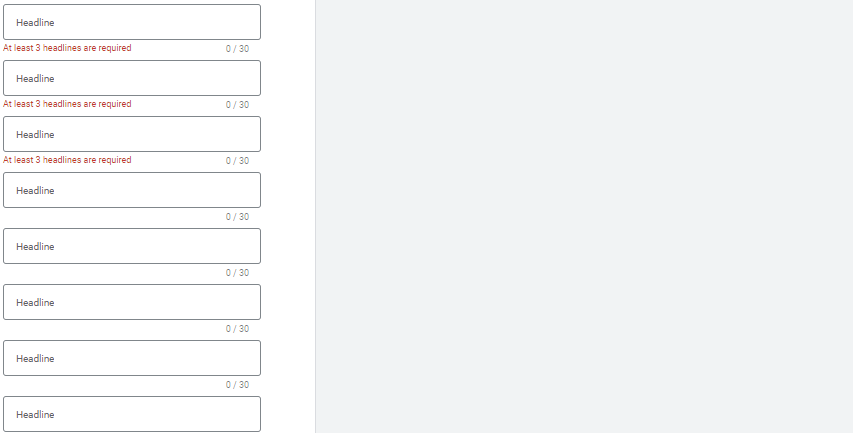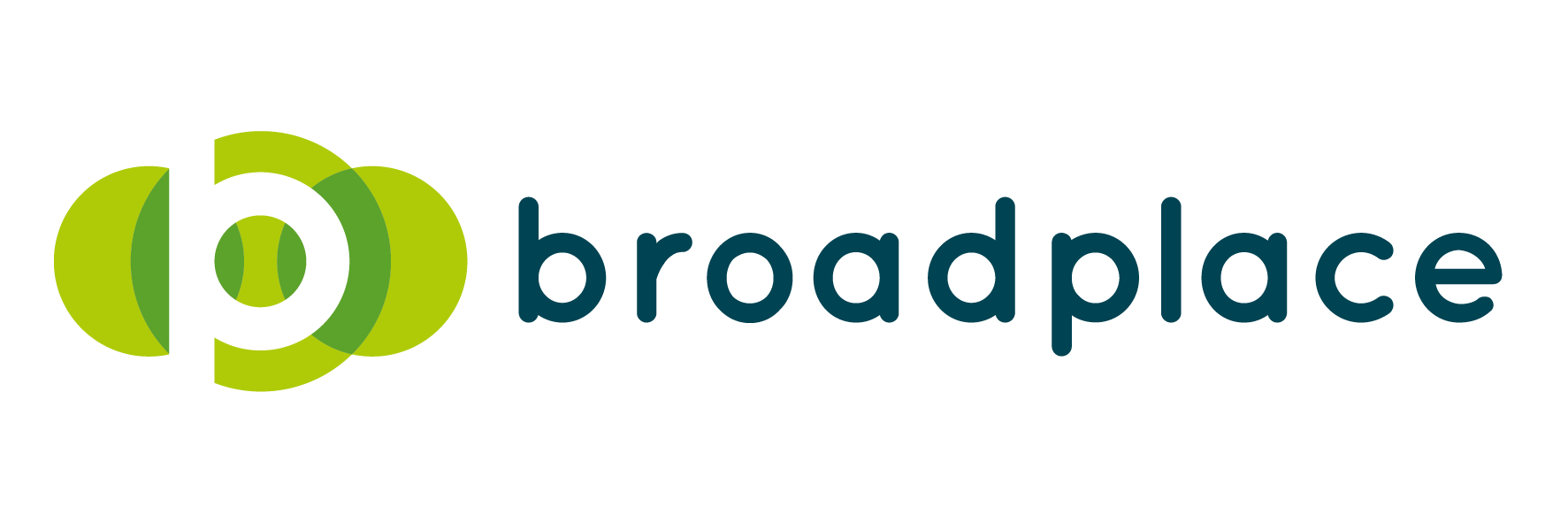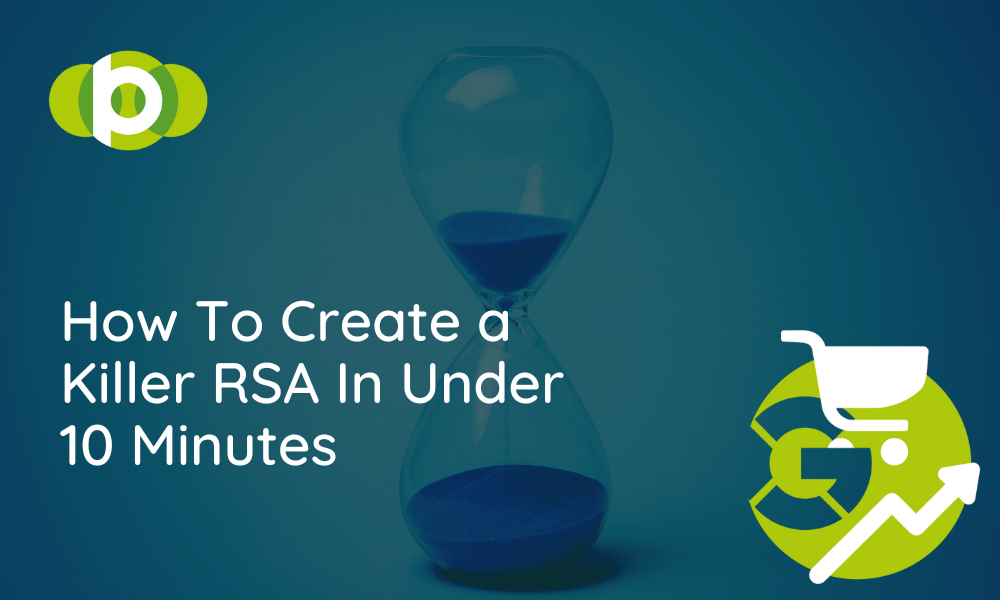The removal of Expanded Text Ads (ETAs) in June means that there is only really one way to test different headlines and descriptions – using Responsive Search Ads (RSAs).
For those who aren’t familiar with using RSAs there are a few things that you need to watch out for when setting them up and testing them versus how you might have done it in the past.
In this post, we’re going to walk you through:
- What are Responsive Search Ads
- How they are different from Expanded Text Ads
- How to set them up
What are responsive search ads?
If you’re reading this post, you’re probably not familiar with what responsive search ads are. A responsive search ad was released by Google in late 2018. This is now a mandatory format of a text ad that is used in a Google Ads search campaign. A responsive search ad has an option of 15 headlines and 4 descriptions that are optimised through Google’s performance-based algorithm.
Google defines RSAs as:
“Responsive search ads let you create an ad that adapts to show more relevant messages to your customers. Enter multiple headlines and descriptions when creating a responsive search ad, and over time, Google Ads automatically tests different combinations and learns which combinations perform best.”
Essentially, what that means is that you give Google some suggestions for headlines and descriptions and it applies some fancy machine learning to figure out which one is going to get you the most clicks.
How are responsive search ads different from expanded text ads?
For those of you who are a little more familiar with Google Ads, you’re probably saying “Well isn’t that just the same as Expanded Text Ads?”
And the answer to that would be – yes and no.
There is a couple of differences between the two. The main one is that RSAs are optimised via machine learning whilst ETAs are done via human intervention.
There are also differences in the number of headlines and descriptions you can test with RSAs offering you 15 headlines and 4 descriptions compared to just the 3 headlines and 2 descriptions for ETAs.

How to create an RSA in under 10 minutes
Research your brand
Before starting to write any copy you need to research your brand. To do that you have to have an understanding of your brand’s best features and an understanding of how the competition sells themselves.
Identify your brand’s best features
By understanding your brand’s best features you’re able to see what your strengths are and the benefits of your service or product. This allows you to set the tone and clarity, to put your copy above others.
To do this you need to:
- Start by looking at the website, from there you’ll be able to analyse what services, products and support your brand offers. For example, if you have a return policy or a next-day delivery feature, these would be ideal for you to boast about within your ad.
- If you still feel as though your ad copy is too generic then try looking at your landing pages. Firstly ask yourself what would I search to get to this page and secondly what would make me click to get to this page? Although these may seem like simple questions they are key to nailing down the right message.
- Next, it’s always important to read your companies about us page. This page will usually contain their core values, the history of their service, and also why they consider themselves different from their competitors. This gives you a set of tools to attract the audience and clicks for your ad copy.
- After this, look at how your brand may differ from others. Analyze your competitors, how are they positioning themselves? What do their headlines say? Why are they different from you? All these questions will help you establish a more unique set of ad copy.

Structuring your Headlines
Your headline is the attention grabbers, eye-catchers, and clickbait of your ad. So how do we make the most out of your ads and what are the core elements needed to be successful with any ad copy?
Core Identifiers
Well, to begin this we would start by looking at your core identifiers:
- What is your brand?
- What is your product?
- What is your category?
These are the first 3 things that you should be thinking about for your first three headlines as they are the first three things people will be searching for.
In total there are 15 Headlines available for use within one RSA. However, we recommend using this so that you don’t oversaturate your ad with the same message and that you are able to have enough variations for Google to optimise your ad.
Call to Actions
Following your core identifiers you will then need to add at least two calls to actions. Two call to actions provides at least two variables for your ads to optimise.
To create a call to action you must:
- Go to your competitor examples from earlier and pull the best ones.
- Think about what they are saying that makes users want to click through.
- Identify what your brand can provide more or higher quality than them.
- Make sure your CTA contains a high sense of urgency (E.g. whilst stocks last)
Unique Selling Point (USP)
You USP doesn’t need to be complicated or hard or creative, can be something as simple as your strongest core feature. For example, if you are an online retail company and you have three main features: UK next day delivery, seasonal sales, and organically sourced products. From this, we can identify that the organically sourced material is a USP as it is the feature that stands out from the rest. What a USP does is that it allows a searcher, user, and consumer, why your service differs from your competitors.
Keywords in headlines
Once you’ve nailed your USPs it’s time to look at the keywords you’re using in your copy. Keywords are important in your copy because they identify to users whether your ad is relevant to their search query.
With your headline, we’d recommend including keywords as it allows your ad to have clear relevance to the keyword you’ve targeted. Along with this, the more relevant your RSA is to your keyword the higher your ad will rank on Google.
After adding your keyword as a headline, you’ll next need to set your keyword headline to be pinned as the first headline in your ad. This is so that you know that your ad’s relevance will always appear on all targeted searches.

Building your descriptions
Descriptions provide the detail in which your headlines aren’t able to.
For RSAs Google recommends using 4 different variations for optimal use and we’d recommend taking full advantage of this.
A lot of the work you’ve done researching your brand and competition should help with writing the descriptions. But if you’re still suffering with a bit of writers block then there are a few other steps you can take for a bit of inspiration:
- Use your About us page: An “about us” page allows advertisers to understand the tone, context, and vocabulary a businesses uses to describe itself. Try first to look for whether there are any start out lines around it’s proposition. You can normally see something like “X years of expertise” or “Leading X in the market”.
- Elaborate on headlines marry up with your headlines and provide the detail that they are not able to give, at a direct glance. Why this is important is because it creates a bit more extra detail as to why someone is searching for your site, service, or product.
- Describe your service, product, and brand: By describing the core values of your brand you are seperating it from the competition. Dig back into the research you did and ask yourself whether the brand is different in terms of quality, efficiency, affordability or accessibility – and then dial in on these differences in the copy.
- Show your specialty: To build upon your USP show why your most important feature separates you from your competitors. For example, If I’m a car business i may say “Book a test drive online today and receive an exclusive extra 15 minutes with your car”. These are attention grabbers and can lead to more clicks on your page and create more intent for the user to click onto your page.

Create Pathways
Pathways in RSAs are where you can dictate the URL slug for your ad. Pathways show how your ad separates itself from competitors and that your landing page is the destination for the user’s search queries.
So for example you may be landing them on a page with the URL: /shoes/mens/sneakers/deals
You can decide to create the pathway: Mens Sneaker Deals.
This gives the user a strong indication of what to expect from your page before they’ve even landed on it.

Summary
Responsive search ads will be more and more the centre point of every digital campaign, so the more we work at the fundamentals, the easier it will become to adjust to this new mandatory format. You must have a few best practices for creating ad copy for them but to also understand what both your client/brand and Google need from you to produce the best performance.
Remember to:
- Research your brand.
- Use your keywords and CTAs in your headlines.
- Marry your descriptions with your headlines.
- Use Pathways to generate user confidence.

